
‘Back There With Paris’
For days, a video camera positioned in the doorway of the octagonal-shaped isolation room filmed Juli-Ann Aaron, clad only in too-short shorts and a see-through top, as male staff tossed in food, laughing as it spilled across the concrete floor, watching her panic.
Her therapist told her she was pathetic and sick and threatened to send the video to her parents if she didn’t smarten up.
Aaron was 16.
This extreme punishment was part of the “therapeutic” program at Provo Canyon School, a for-profit institution for “troubled teens” in Utah, 3,000 km west of Aaron’s Toronto home.
She was subjected to solitary confinement because she’d tried to kill herself, she said.
“I had nothing to live for,” Aaron told HuffPost Canada. “I couldn’t face being there any longer.”
Aaron was held against her will at Provo Canyon for more than a year beginning in 1998. Sharing her room was then 17-year-old heiress Paris Hilton, who was years away from becoming famous for red carpet hijinks and her Simple Life TV show. Over meals of greasy food and scrubbing toilet bowls side by side, they’d talk about their future and how they could escape. Hilton’s spunk and energy sliced through the medicated fog clouding Aaron’s thoughts.
Despite exhibiting no signs of serious mental illness, Aaron was forced to take antipsychotic medication. She rapidly gained weight and her hands shook.
“The medication was part of the abuse,” Aaron said. “They’d punish us for feeling.”
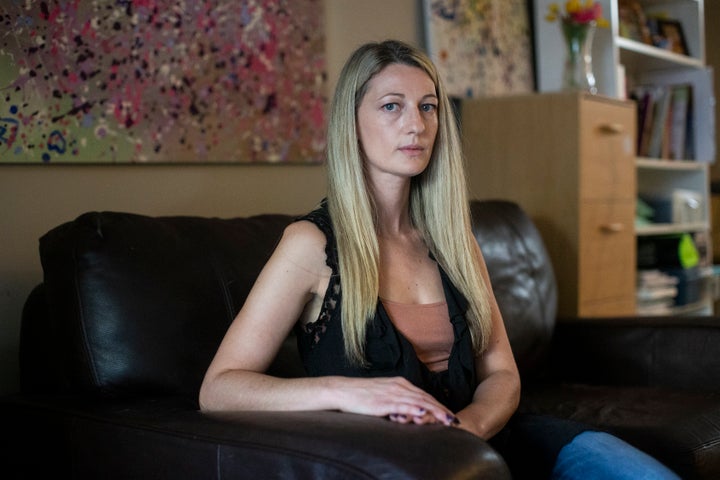
Memories of her and Hilton’s time together came flooding back when the documentary This is Paris was released in September. Hilton spoke publicly for the first time about the trauma she said she experienced at Provo Canyon and other programs.
The documentary spurred Aaron to share the profound impacts those same facilities had on her life, in an effort to prevent it from happening to other Canadian children. To this day, she said she struggles post-traumatic stress disorder.
“I’ve wanted to tell my story for 20 years,” said Aaron.
“Every birthday was traumatic. Every holiday I have memories of not being loved. I didn’t get hugged because I didn’t have anyone close to trust for so long. Then the paranoia, I’m not safe because I wasn’t safe for so long. I used to wake up every night with panic attacks and nightmares that I was still there. I just had a dream that I was back there with Paris.”

Following the release of Hilton’s documentary, Provo Canyon posted a statement to its website, declining to comment on any allegations of neglect or abuse prior to 2000, when it was under different ownership. In response to the allegations made in this story, Provo Canyon provided the same statement.
“The school provides a structured environment teaching life-skills, providing behavioral health therapy and continuing education for youth who come to us with pre-existing and complex emotional, behavioral and psychiatric needs,” Provo Canyon said.
“While we acknowledge there are individuals over the many years who believe they were not helped by the program, we are heartened by the many stories former residents share about how their stay was a pivot point in improving — and in many cases, saving — their lives.”
We want to know about your experience in the ‘troubled teen’ industry. Please share any information with us at scoops.canada@huffpost.com.
The “troubled teen”’ industry is a loosely-regulated network of hundreds of therapeutic boarding schools and residential treatment and wilderness programs unique to the United States. For tens of thousands of dollars a year, parents are promised the strict, tough-love programs will cure their child of emotional, behavioural or substance abuse problems, ranging in severity from struggling at school to methamphetamine addictions.
For the past three decades, a number of these facilities have faced allegations of horrific abuse and neglect. In 2007, the U.S. government reviewed the deaths of 10 children in treatment programs, who died from heat stroke, dehydration and suicide, among other causes. The Government Accountability Office concluded untrained staff and reckless operating practices — such as restricting food to undernourished teenagers and failing to provide medical care — played significant roles in their deaths.
Watch: Kat Von D was among those “locked up” at Provo Canyon. Story continues below.
Despite uncovering thousands of abuse allegations involving more than 1,600 staff members across 33 states, the U.S. government did not pass new regulations. To this day, the ‘troubled teen’ industry operates without federal oversight, but rather uses a patchwork of state licensing and accreditation programs with lax enforcement, said Sarah Golightley, a social work PhD candidate at the University of Edinburgh in the U.K.
“The lack of regulation allows for wild divergences in practices and extreme forms of abuse to be carried out. Some (facilities) are currently extremely dangerous, while others might work for some people,” said Golightley, who has been researching American therapeutic boarding schools for the past four years, and attended one herself in the early 2000s.
“What’s quite scary is people don’t know what they’re sending their children to.”
In Canada, the only wilderness and residential treatment program that’s geared for longer stays is Pine River Institute near Shelburne, Ont. At any given time, 220 kids are on its waitlist, said Pine River’s CEO Vaughan Dowie.
“If you’re in the midst of a crisis, and I tell you that we can see your kid in a year, or a year and a bit, you say, ‘Well, I am sorry but we can’t wait that long so I’ll find something else,’” Dowie said. “Those are the kids you see going to the States because parents are so desperate.”
Around 40,000 children, including some from Canada, are currently enrolled in U.S. facilities — their parents either looking for the kind of secure residential treatment that exists only south of the border or facing too-long waitlists for local mental health help, say five experts HuffPost interviewed.
An estimated 28,000 children and teens in Ontario are waiting as long as two and a half years for treatment right now, reported Children’s Mental Health Ontario. About 200,000 kids with serious mental health issues have no contact with services at all.
It’s unclear how many Canadian teenagers are sent to the States because provincial health insurance doesn’t cover this type of out-of-country mental health treatment, leaving parents to pay out of pocket and fly under the radar of public data collection.
HuffPost confirmed with some of the country’s leading health organizations — the Canadian Mental Health Association, Centre for Addiction and Mental Health and Canadian Institute for Health Information — that they also don’t track how many families seek residential treatment for their children in the U.S.
One Toronto-area educational consultant, Janyce Lastman, said she places anywhere from three to 10 Canadian kids a year in American wilderness and residential treatment programs — as she’s done throughout her 30-year career.
The demand has been consistent, the vast majority of her clients do very well, and the allegations of abuse are overblown or unavoidable, Lastman told HuffPost.
“Things happen in programs. And I don’t mean abusive things. I mean things like somebody forgets a kid is a vegetarian and they’re served a meat meal. It doesn’t mean they’re traumatized ... That’s not the time to fall apart. That’s not the time (for parents) to regress back to all these fears at home that ‘My kid is probably being beaten and starved and raped’ and whatever,” she said.
“I’m sure there are lots of people who don’t (care about kids), who are there just to make money or are going to be abusive but the large majority of those people are no longer involved … I don’t think there’s any way that any program, no matter how good they are, can stop on occasion a perpetrator coming into their midst.”
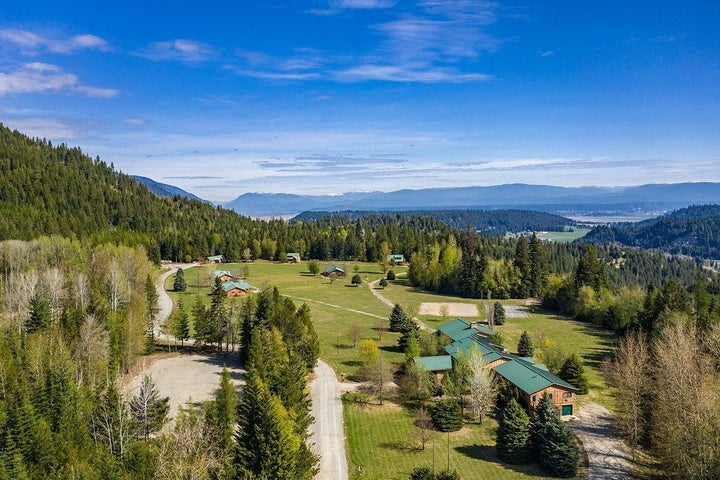
Most U.S. facilities are in rural areas, offering immediate treatment with idyllic views of mountain ranges and forests where teens might find peace and understanding.
However, parents sign over decision-making rights to the facilities and youth are subjected to treatment whether they want to or not.
The teenagers are also cut off from the outside world and communication with their parents is monitored by staff — at least for the first several months, former students told HuffPost.
This practice “places kids at extreme risk,” said Ryerson University’s Kim Snow, a professor in the School of Child and Youth Care. “They’re taken away involuntarily, kept from their parents and isolated in the guise of treatment. That’s the triad to protect institutional abusers. Who is safeguarding these children?”
In the last five years, police have responded to dozens of calls for reported sex offences and violent crimes at a number of Utah facilities, such as Provo Canyon’s boy’s campus and Copper Hills Youth Center, according to the Salt Lake Tribune.
In 2017, Jason Calder, a therapist at Utah’s New Haven Residential Treatment Centre, sexually abused a 16-year-old patient at least 10 times, during so-called therapy sessions late at night and on long walks. He was fired for the inappropriate relationship and went to work at another facility. However, New Haven, which remains open, didn’t report Calder to police for months, not until the victim told a new therapist. Calder was then arrested and later pleaded guilty to rape and forcible sodomy.
New Haven did not answer HuffPost’s questions about the Calder case. Instead, CEO John Stewart said in its 25-year history it has successfully served more than 1,800 families, “which has led to our excellent reputation in providing quality care, compassionate understanding and much-needed healing.”
Last year, a riot broke out at Red Rock Canyon School, a Utah facility for 12 to 18 year olds where, in two and a half years, nine employees had been charged with child abuse, reported the Tribune. It closed in the months following the violent fighting, with staff facing further allegations of sexually assaulting teens.

This past May, 16-year-old Cornelius Fredericks died of asphyxiation after being restrained by staff for throwing a sandwich at Michigan’s Lakeside Academy, local media reported. Three former employees of the now-closed facility have been charged with involuntary manslaughter and child abuse.
Eight Canadians shared their experiences with HuffPost. They all said that in the oppressive and isolated facilities in Utah, Idaho, Montana and Iowa, they were subjected to humiliating and terrifying punishments, restraints, solitary confinement and physical and emotional abuse.
HuffPost also spoke to five American women who attended New Haven up until 2019. What they said happened to themselves and their peers demonstrates that similar “tough love” methods used in the 1990s and early 2000s continue today.
Juli-Ann Aaron
Just before her 15th birthday in 1996, Aaron was sent to a CEDU Educational Services facility in the mountains of northern Idaho. The name, pronounced see-doo, was reflective of the company’s motto, “See yourself as you are and do something about it.”
Aaron’s parents, Raymond and Isobel, said they had hoped to quell Aaron’s rebellious streak, which included skipping chores, breaking curfew and going to a rock concert in downtown Toronto.
“When I say it now, it seems like just normal teenage stuff. But at the moment it was really difficult,” said Raymond, co-author of Chicken Soup for the Parent’s Soul, and an array of other self-help books.
“And I mean, she wasn’t doing anything criminal, but it was just tough all the time.”
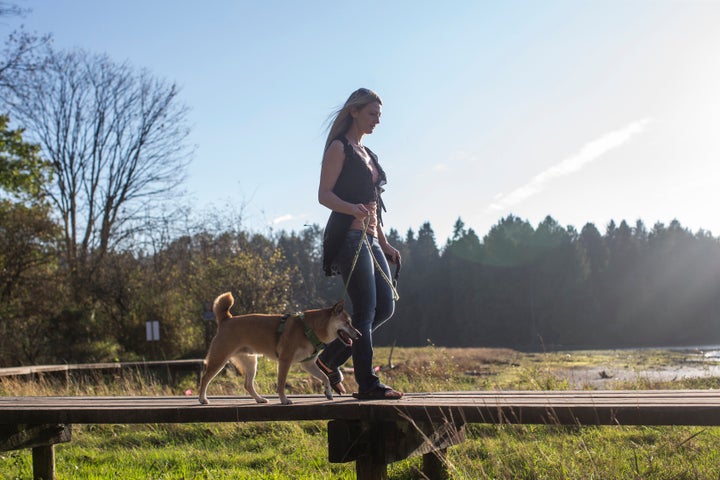
Aaron said she was feeling withdrawn and sad, coping with her parents’ tumultuous divorce and not excelling at school. She was also trying to make sense of the trauma of being sexually abused as a young child.
Raymond and Isobel searched for a Canadian residential mental health program, but said they couldn’t find anything suitable. They eventually learned of CEDU through word of mouth, and the program’s website. Staff’s subsequent consultation calls — promising to save their child from a life of drug addiction and prostitution — impressed them.
The catch was it was in Idaho.
“I was desperate to save my child,” Isobel said. “She was going down the wrong path. And Idaho seemed to be the answer.”
Raymond followed CEDU staff’s advice and bought a set of handcuffs — just in case his daughter attempted to escape on the way there. He picked her up from school and told her they were going to Calgary for a few days, he said.
“They told me to lie to her. That should have been a clue, but I figured OK, if I’m going to have a surprise party for my daughter, I tell her a little white lie. So that’s what I thought this was, a white lie,” Raymond said.
Once they reached the Calgary airport, though, they boarded a connecting flight to northern Idaho and then drove through the mountains to the facility.
“I was confused, and my heart was racing, but I was 14 and didn’t want to be embarrassed and was like, ‘I’m in trouble. OK so I’ll just go,’” Aaron said. “I started to get a worse and worse feeling.”
The pair entered CEDU’s Boulder Creek Academy, and the door locked behind them, said Raymond.
“They said to Juli-Ann, ‘This is not for two and a half days. You’re here for a couple of years,’” he recalled. “And Juli-Ann started screaming and crying. She said, ‘It can’t be, my father never lies to me. Never ever.’ And I was horrified.”
Raymond was reassured by staff everything would be fine — and he believed them, he said.
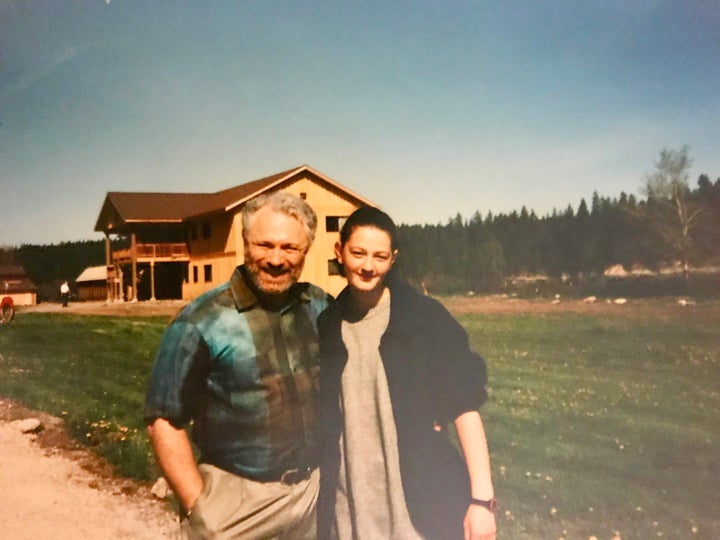
Aaron was taken into a different room where she was strip searched and given new clothes — tight jeans, hiking boots and a thin cotton sweatshirt despite the December cold, she said. They handed her a shovel and sent her to clear snow.
That’s when she caught sight of her dad getting into his rental car.
“I was yelling and the [guards] were holding me back. I collapsed to the ground and sobbed,” Aaron said. “My dad waved goodbye and left.”
For the next year, Aaron was transferred between Boulder Creek and the Ascent Wilderness Program. Her letters and calls home were monitored by staff who disconnected the line when she began to tell her mom there was something wrong with how she was being treated.
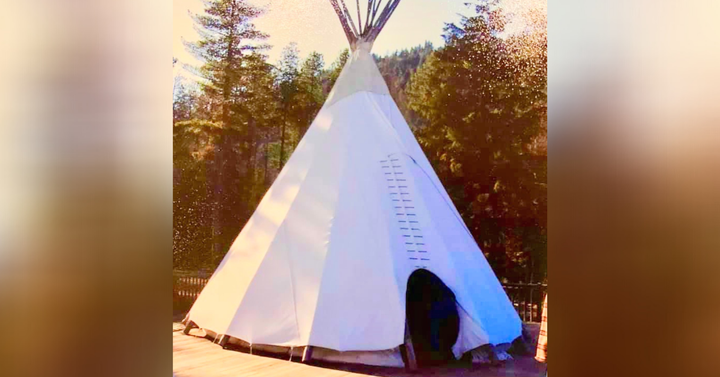
She wasn’t allowed to attend class until she first earned it by labouring outside, sawing logs and hiking deep into the mountains in the middle of the night without food. Aaron said she was forced to squat outside in the snow for hours, suffering frostbite on her feet and almost losing a toe.
‘Group therapy’ involved students hurling insults at one another. They’d circle around her, screaming she’d lied about past traumas, she was a weak failure, no one would ever believe anything she said. Staff ordered her to lay on the ground and “sizzle like bacon,” thrashing her limbs around.
“I was their target until they broke me and I started shaking and crying and screaming until I lost my voice,” said Aaron.
One time when she walked out of a therapy session without permission, staff tackled her to the ground and injected her with the sedative Thorazin, she said. She was strapped face down in a stretcher for hours, alone in a room.
“I couldn’t breathe,” Aaron said.
Boulder Creek has since changed ownership from CEDU to Universal Health Services (which also owns Provo Canyon School). Since at least 2005, Boulder Creek has not used mechanical restraints, said CEO Tai Komanec, adding the facility is in “good standing” with the state and its accrediting bodies. The facility did not comment on the other allegations.
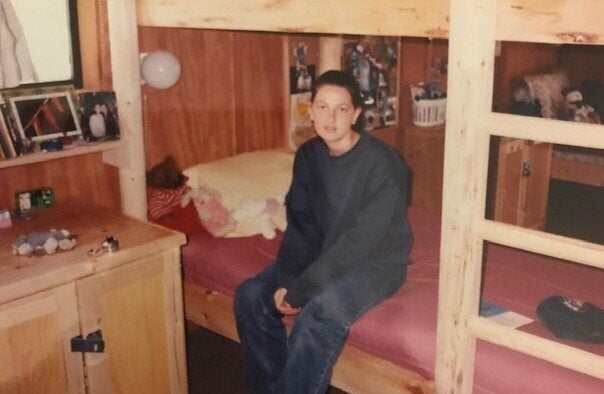
Aaron attempted to run away the day before she turned 16, but was caught and placed in a secure behavioural unit where she remained in solitary confinement for two months under the supervision of her therapist. She spoke to her parents once, with her therapist listening in. Fearing further punishment, she told them she was doing OK.
In reality, Aaron was given nothing to wear but a hospital gown that tied up only at the back of her neck. She slept on the floor without a mattress — sometimes with a blanket, when a nurse remembered to give her one for the night. She banged on the door, begging and crying for someone to talk to her. No one ever did.
“All I could do is dream about what I wanted for the future and that one day I would get out,” Aaron said. “All I thought about was freedom. And I would just pace back and forth in a figure eight. And you know what? That’s fucked. I didn’t have any psychological issues. I wasn’t violent.”
Suspecting something was wrong, but not knowing exactly what, her parents pulled Aaron out of the CEDU program, and solitary confinement, and enrolled her at Provo Canyon in Utah.
“I knew she had tried to run away, but it was always presented to me as if she was really troubled,” Isobel said. “This other school was better ... In retrospect it was probably not working in anyone’s favour.”
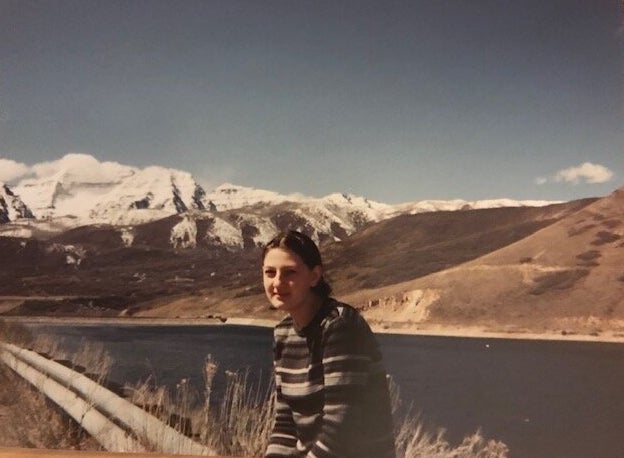
At Provo Canyon, Aaron was sent to the punishment unit where she had to stand all day and stare at a wall. Staff yelled at her throughout the day, but especially at night in the dark, Aaron said. She was called a slut and told she was going to become a “teenage drug addict.” During therapy, Aaron was forced to watch the video of herself trapped in the isolation room and told she was beyond help.
Finally, after more than two years and US$250,000 spent on her treatment, Aaron’s parents decided she could come back to Toronto to finish high school. She returned home broken, but weaned herself off medication forever and slowly began rebuilding her life.
Jenny Talbot
Jenny Talbot was in Grade 12 in 2004 when her mother drove her from Vancouver to the other side of the border under the guise of a shopping trip. Talbot said she’d been staying out late and dating a boy her parents didn’t agree with, but was still attending school and had a part-time job.
When they pulled into a parking lot in Bellingham, Wash., a woman and man approached, Talbot said. They were from a transportation service, coming to escort her to Ascent in Idaho.
“I tried to walk away,” Talbot told HuffPost. “And they took me by the elbows and forced me into their van. They buckled me in, child-locked the doors and that was it.”
Talbot’s experience was fraught with privacy violations, humiliation and sexual abuse.
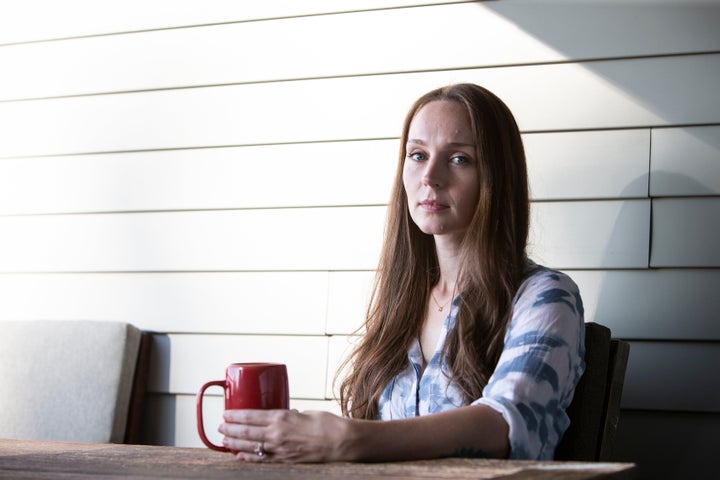
At Ascent, she was forced to take off all her clothes, undergo an invasive strip search to check for drugs, followed by a full physical exam by a male doctor, she said. Instead of going to class, she endured senseless manual labour, including cleaning rocks and moving garbage, slept in a teepee on the hard ground and scrubbed the showers in her underwear while staff watched and yelled at her.
In the middle of winter, Talbot said staff sent her on a two-week hike through the mountains, carrying an 80-pound backpack. Deep in the forest, she was left alone for five days, not knowing when, or if, someone would return for her.
“I thought if I made it through, I would go home after,” said Talbot. “I was like, ‘I can do this. It’s OK,’ but it was horrific.”
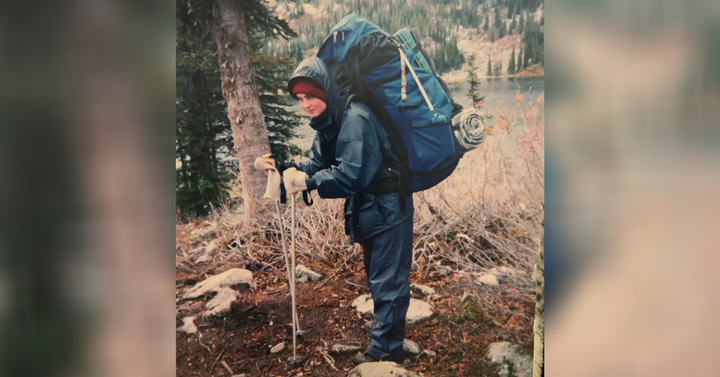
But Talbot didn’t go back to Canada right away. Instead, she stayed within the CEDU system, and was sent to the therapeutic boarding school Northwest Academy.
At night, she was made to sleep facing the middle of the dorm room and wasn’t allowed to roll over, or cover her eyes, causing routine sleep deprivation, she said. Every 20 minutes, a staff member walked by and shone a flashlight in her face to make sure she hadn’t rolled over.
During the day, under the guise of singing lessons, a staff member took her to a secluded spot, where he kissed and groped her, she said. He also punished her by making her saw rocks for hours on end.
“It’s so damaging,” said Talbot.
Although now a paramedic, Talbot hasn’t been able to work for two years due to aggressive post-traumatic stress disorder rooted in her months in Idaho.
She has terrible insomnia, only able to sleep when taking medication.
“I have nightmares,” Talbot said. “I dream about being somewhere I can’t get out of.”
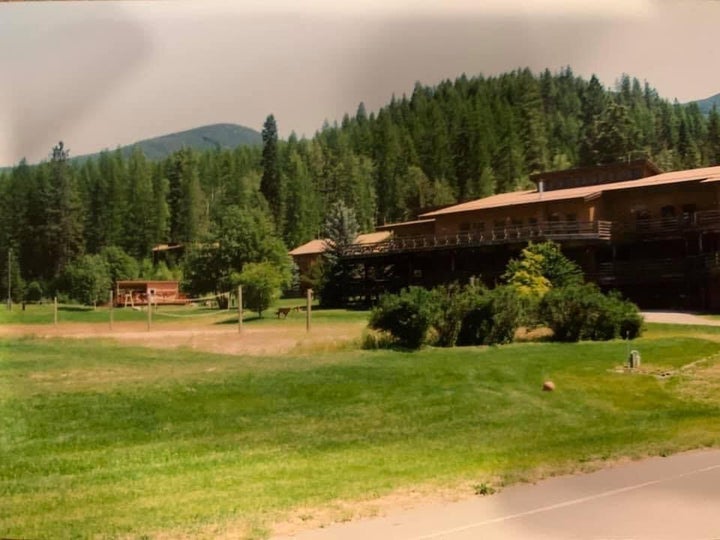
CEDU shuttered Ascent shortly after Talbot left. In 2005, the organization faced dozens of lawsuits from parents and former students alleging medical malpractice and abuse by poorly trained staff. Aaron was among those who sued, but CEDU went bankrupt before she reached a settlement.
CEDU’s Northwest Academy was also bought by Universal Health Services, but then closed in 2018 due to low enrolment numbers.
CEDU was one of the original ‘troubled teen’ facilities, founded in 1967 by a former Synanon cult member. The cult used sleep deprivation, isolation, humiliation and hard labour to cure heroin addicts — methods since discredited, but transferred to wilderness programs and bootcamps intended to snap young people out of misbehaving.
These techniques are unethical, appalling and, for lack of a better word, “bullshit,” said University of Ottawa professor Tracy Vaillancourt, Canada Research Chair of Children’s Mental Health and Violence Prevention.
“You can’t just throw kids into the wilderness with complex mental health issues and think that you’re going to make them better. There’s just no way,” Vaillancourt said. “What kids need most is unconditional positive regard. They need services provided to them and their family.”
Chyanna Goodwin
Chyannna Goodwin was first sent to an “emotional growth boarding school” in the U.S. with her brother Jaydi in 2008 as her family in Calgary struggled through a tumultuous time.
For two years the siblings attended Spring Creek Lodge Academy and Midwest Academy, two facilities under the World Wide Association of Specialty Programs (WWASP), an organization which, up until the mid-2010s, was connected to a number of affiliated ‘schools’ using similar methods to CEDU.
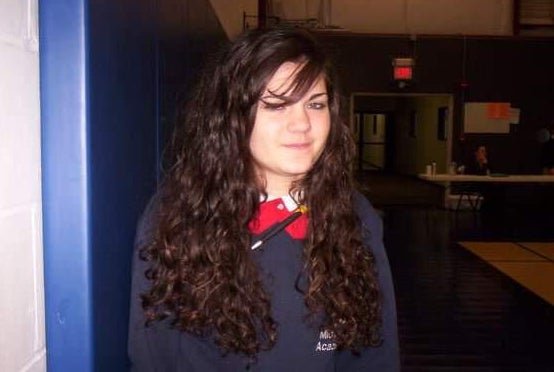
Goodwin is Indigenous, and her mother was certain the expensive WWASP programs would be a far departure from the Canadian residential day school she attended as a child.
Goodwin still has scars on her knuckles from slamming a towel wrapped in duct tape onto the floor until her hands bled — a bizarre form of prescribed therapy. She was severely punished for mistakenly breaking rules, such as when a staff member found a sock in her bed, she said.
At Midwest Academy, where she spent more than a year, Goodwin said she wasn’t allowed to go outside, look out the windows, or communicate with anyone except for 15 minutes at the beginning and end of each day with few exceptions.
The siblings said they were separated and not permitted even to glance in the other’s direction. It was excruciating.
“I don’t know how to describe it. It was some of the worst things I’ve been in,” Jaydi said. “She was so close and I couldn’t even look at her and if I did it was instant (punishment) just for looking at her.”
Goodwin wasn’t allowed to draw, sing, wear her hair in a braid or have any connections with other students. Staff would withhold her food as punishment.
“A big part of it was I wasn’t allowed to talk. My voice was taken away,” said Goodwin.
She attempted to follow every rule, terrified she would be confined to isolation, where she had seen other kids suffer. They’d be forced to hold specific positions in a “white box” for 12 to 24 hours, Goodwin said. If they broke out of the position, they’d have to start over again.
Midwest Academy felt like “a lot of wasted time,” as if her life had been on pause for two years while she endured immeasurable loneliness. When Goodwin finished Grade 12, she moved to Saskatoon.
She is now a nurse, which has given her perspective on the damage places such as Midwest Academy cause.

“It’s such a power differential that’s very off-putting to me,” Goodwin said. “You have a teenager who is going through a developmental period that’s going to shape them for life. (Staff) shape them how they want, and take power and control away from them, inflicting trauma. Even if someone had a good experience, they’re not going to be the same. It’s not a good place for a child to be.”
In 2016, the owner of Midwest Academy was charged and later convicted of sexually abusing a female student. He was also found guilty of confining two male students to 6-foot-by-8-foot isolation rooms for weeks, requiring them to sit in specific postures, as Goodwin described. Midwest Academy was subsequently shut down.
Spring Creek Lodge closed after a girl hanged herself in a bathroom stall following severe punishments, according to the New York Times. WWASP dissolved in the years following, facing a lawsuit on behalf of more than 350 former students and parents in Utah.
‘A model program’
The ‘troubled teen’ industry continues to thrive. In Utah alone, 72 programs operate, generating at least 6,400 jobs, $270 million in annual earnings and $22 million in tax revenue, according to a 2016 University of Utah study. About 90 per cent of kids come from outside of the state.
States like Utah have regulations for residential treatment, and require licences, but enforcement is limited, said Tom van der Veen, a regulatory consultant for residential programs with 20 years’ experience in the area.
“In some states there are going to be one or two staff that are responsible for this, and there’s very little legislative or executive support for holding folks accountable,” van der Veen said. “I think people make an assumption that there are more resources available to do this work than there usually are.”
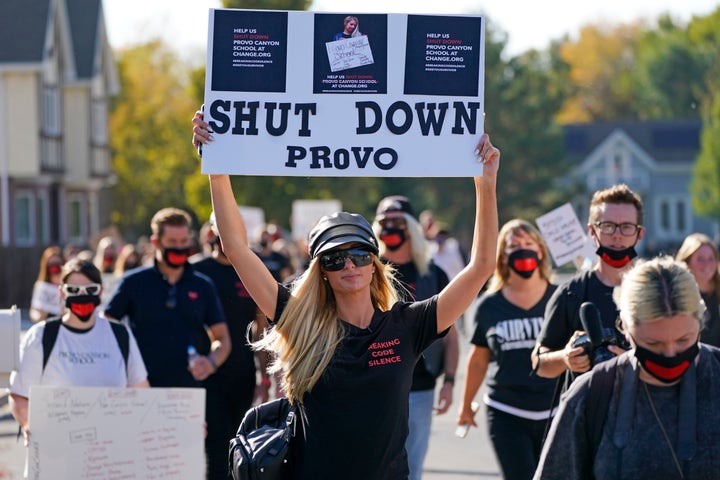
A Salt Lake Tribune investigation in August found Utah only has 30 inspectors to oversee more than 3,000 licensed facilities, including children and adult treatment centres and foster care. In the past five years, the state hasn’t revoked any teen residential treatment licences. It doesn’t make its inspection findings public.
Some programs pay to become accredited through private organizations, such as The Joint Commission. However, a facility will still receive a decent accreditation score as long as it has a plan to fix the problem, whether or not it actually does, said van der Veen.
“If the current level of quality is unacceptable, the accreditation process is not going to say, ‘You need to close your doors,’ but it will encourage improvement,” van der Veen said.
New Haven, where a therapist was convicted of raping a student in 2017, is now “a model program,” according to Lastman, the educational consultant working in the Toronto area. New Haven is accredited by several agencies and licensed by the state.

“When I say a model program, they’re a program that has been recognized as having a series of goals and programs and structures available that are easy for other programs to adopt. So, they train other programs in how to do things and they are generous with their time,” Lastman said, noting she does not receive payments from New Haven to refer or promote the facility, although it has covered her travel expenses when she’s visited.
The rape of a student was “a horrible thing,” said Lastman.
But, she said, parents run the risk every day their child will be physically, emotionally or sexually abused by someone in a position of power — a coach or teacher, for example — and it’s not fair to single out one industry.
“These things happen,” she said, pointing to cases of sexual assault at Canadian schools like at Toronto’s St. Michael’s College School in 2018.
In 2002, Lastman was hired by a Toronto family to help their 14-year-old daughter Lee Goldman, who had learning disabilities and was acting out. Lastman referred Goldman to New Haven.
Goldman vividly remembers the morning she got up to find Lastman, and two people from a transportation agency, sitting in her kitchen. Lastman also remembers taking on Goldman’s case, but declined to comment on it specifically.
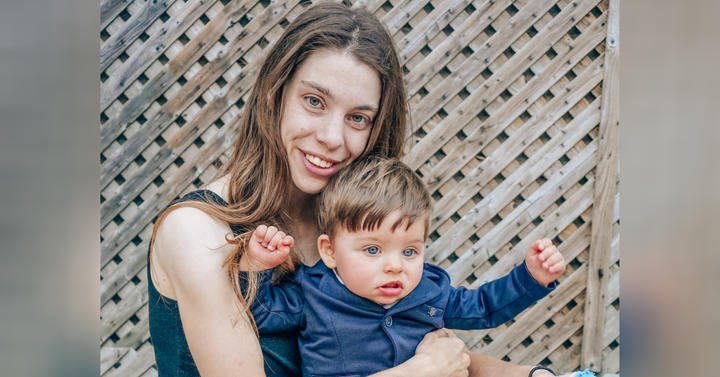
“She started talking about this school in Utah, and I was thinking to myself, ‘My parents would never send me to Utah. This is crazy.’ And they’re like, ‘Surprise, you’re leaving today,’” Goldman said. “And before I really knew what happened, the two people grabbed me, threw me in a car and took me to the airport.”
Goldman was at New Haven for a month. She was made part of a “team,” which was a group of other new girls she had to go to the bathroom with, shower in front of, and be with at all times. It made her feel so anxious and uncomfortable she avoided showering.
Therapy consisted of staff singling out one student for everyone else to insult, scream at and say horrible things to until that girl became hysterical, Goldman said.
“It was very abusive,” she said.
Goldman was then sent to Provo Canyon. For the next year and a half, she said she was put in the same type of concrete isolation room as Aaron, around 50 times, and routinely and violently sedated and restrained by staff.
“The biggest thing I was punished for was crying,” said Goldman.
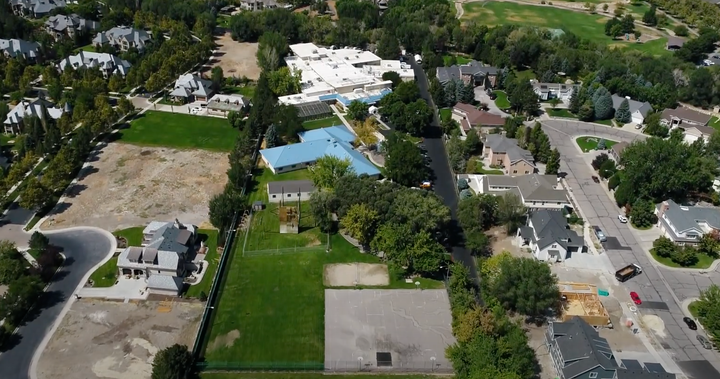
Provo Canyon, which by that time was under the ownership of Universal Health Services, denies using solitary confinement as a form of intervention, or medication as a means of discipline.
“We cannot comment on individual patient treatment, care or allegations due to privacy laws — but will reiterate that we are committed to providing high-quality care in a compassionate, safe environment,” Provo Canyon said in its statement.
Ella Bissette, who said she is on the autism spectrum, attended New Haven in 2015. There, she said she was put on a “ridiculous amount of medication,” including a high dose of lithium that made her shake. Once, when she was trying to harm herself, two staff members used restraints, but to an excessive degree, Bisette said.
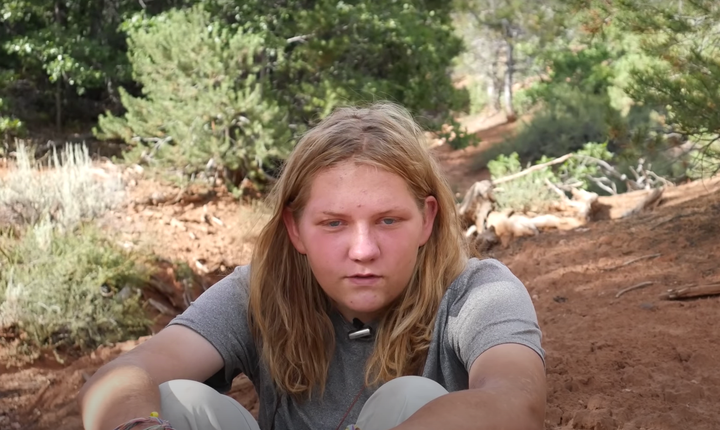
While a female employee called her names, a male employee shoved her face into the carpet, “letting me up occasionally to breathe,” Bissette wrote in a complaint to New Haven. “I was terrified. He was kneeling on top of me and twisted my arms behind my back. I was screaming he was hurting me. (He) began touching me inappropriately. I managed to escape him and tried to run, but he slammed me into the wall.
“(He) grabbed me and sat on me again. Every time I would calm down, he would twist my arm more to make me cry.”
The male employee appears to have been promoted to a managerial position shortly after the alleged incident, and continues to work in the ‘troubled teen’ industry, according to LinkedIn. Bissette said New Haven never responded to her complaint.
“The only people allowed on campus were family members and educational consultants and when anyone would visit, things took on a very different appearance.”
- Amal Theodoredis, New Haven graduate
Stewart, New Haven’s CEO, said in an email that he cannot comment on specific statements from current or former students due to confidentiality constraints and professional ethics.
“However, it is important for you to know that we take all comments from program participants and their families very seriously, which is why we continue to extensively measure family well-being and seek feedback not only during a student’s time at New Haven but two years beyond their stay,” he said.
“Our internationally validated research shows that more than 80 percent of both fathers and mothers of New Haven graduates report healthy family interaction thanks to treatment.”
Four other Americans who recently left New Haven described their time there as mixed. They said there were many staff members who sincerely cared about them and changed their lives for the better, but they were often in their early 20s with limited experience, and there was very little oversight.
“The only people allowed on campus were family members and educational consultants and when anyone would visit, things took on a very different appearance,” said Amal Theodoredis in a statement.
She attended in 2015 and said overall it did more harm than good.
“I don’t recall anyone that could be considered an unbiased third party checking up on us.”
One woman, who was struggling with substance use and undiagnosed borderline personality disorder, said her experience at New Haven in 2017 was mostly positive. She learned to ask for help, which saved her life on more than one occasion. She spoke on the condition of anonymity so as not to impact her career.
What was missing from her treatment, she said, was addressing her addictions and sexuality, which her therapist largely ignored. Staff also refused to call her by her preferred pronouns.
Another woman who attended New Haven around the same time and also wanted to speak anonymously said staff used restraints on students when it was “extremely unnecessary,” such as during panic attacks. They were also deceived as part of their therapy.
One time staff told the girls to confidentially write down their secrets about each other on notecards, promising to throw them out afterwards, she said. Instead, they read them aloud to the group.
“That was really, really, really horrible,” said the woman, who, at 15, was sometimes put in charge of leading group therapy sessions. “Girls were yelling at each other and freaking out. All these strange things were coming out. It was a disaster.”
At mealtimes, she said she was given small portions of food, which left her hungry all the time. She drank huge amounts of water to feel full. Other girls would fight over pieces of extra cheese or try to steal snacks.
Last year, a family sent their then 15-year-old daughter Jane (not her real name) to New Haven to help her get out of a “very dark spot” and save her life, she and her mother told HuffPost. They spoke anonymously so as to not hurt Jane’s chances of getting into college.
“My entire stay there was definitely some of the worst months of my life,” Jane said. “I think the problem was that it was a very closed-minded environment, and I had to do everything their way. I felt very trapped.”
Jane said for the first two weeks she wasn’t allowed any contact with her parents, which made her feel hopeless. When she was eventually allowed her 15-minute phone call, a staff member sat in the room with her the whole time.
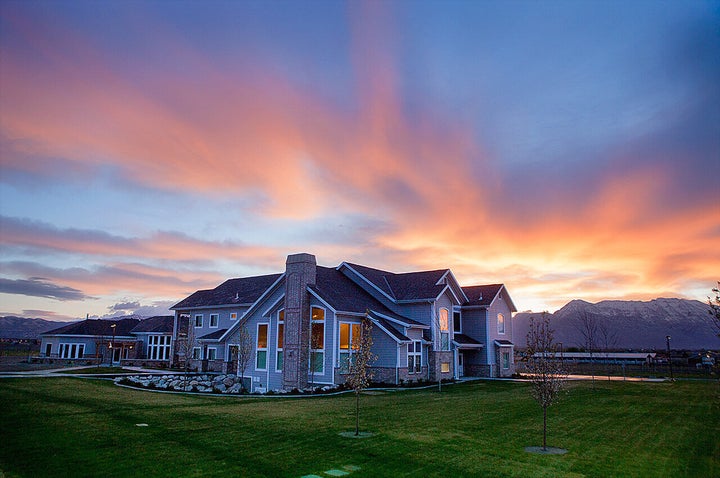
One night Jane said she woke up to being groped by another student, which she immediately reported to staff. Still, the student didn’t face any repercussions for the sexual assault and staff didn’t report the incident to any authorities, Jane said. They did call Jane’s parents, but told them the student had done it as a joke and it wasn’t a big deal.
“They downplayed it very much,” Jane’s mother said.
In a high-stress environment, Jane said the girls around her would harm themselves, scream they wanted to die and make suicide pacts. If a girl attempted to die by suicide, she’d be put on watch, which at New Haven meant she’d be confined to a mattress in the middle of the floor in the common area, near the kitchen, where staff could keep an eye on her and everyone else.
“She wasn’t allowed to talk to us, and we weren’t allowed to even smile at her,” Jane said. “It was pure isolation for her. I can’t imagine how embarrassing that must have been.”
After six months, Jane’s family decided to pull her from the program, feeling she was ready to resume therapy closer to home in time for the new school year. They faced resistance from New Haven staff, who wanted her to stay for a full year, but ultimately followed through on their decision at the advice of an outside psychiatrist and psychologists.
Jane and her mother acknowledge there is a need for places like New Haven where, as a last resort, kids are able to take a break from parents, friends and social media and focus on their rehabilitation. But something needs to change with how the facilities are run.
“The inexperienced, uneducated staff working with these troubled girls …. I know they can’t all have a PhD, or a psychologist working with every child, but it’s just not an appropriate system,” Jane’s mom said.
New Haven’s Stewart said it is “often applauded” for having one of the highest staff-to-student ratios in the industry, who are “well-educated” and receive weekly training.
Breaking Code Silence
A movement against the ‘troubled teen’ industry was already growing before Hilton’s documentary came out, but it’s since gone viral.
Watch: Paris Hilton demands closure of Provo Canyon School. Story continues below.
Katherine McNamara, one of the founders of the movement Breaking Code Silence attended Provo Canyon at the same time as Aaron and Hilton — and appeared in the documentary.
Breaking Code Silence is pushing for awareness, peer-reviewed research and U.S. federal legislation to regulate the industry, McNamara said.
“These programs are not only ineffective, but they’re also dangerous and harmful,” McNamara said. “I think parents and people in the communities don’t understand this kind of abuse.”
Oregon Senator Sara Gelser is pushing for tougher regulations and enforcement of the ‘troubled teen’ industry, which she described as caring about nothing but making as much money as possible.
“My goal is to stop kids from being placed before it’s regulated and to get them out because they’re in danger,” Gelser said. “I know there’s people that are 10, 20 or even 30 years out from their experiences and they’re still suffering the consequences. And we’ve got to stop that from continuing because it’s unacceptable.”
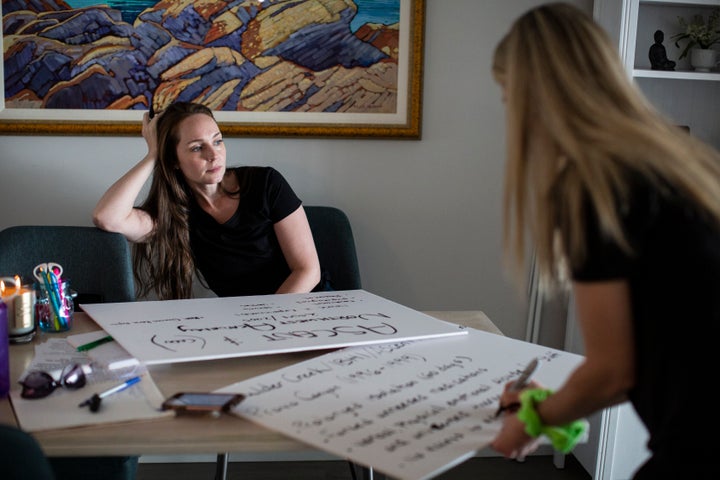
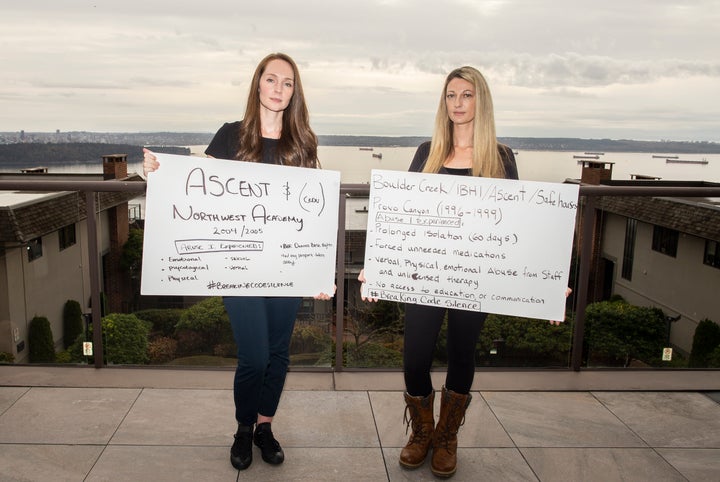
The last couple of months have been a whirlwind for Aaron, who has been connecting with other survivors, including Talbot. Together, they’re working to raise awareness in Canada about the ‘troubled teen’ industry.
“It’s been heartbreaking, and my heart’s bursting. It’s empowering because as a collective we can surrender the trauma to the commonality we share,” Aaron said.
“I wanted fresh air and clothes and to make decisions for so long. I was so powerless. The isolation was something I started to tell myself I liked, just so I could survive.”
Aaron now lives near Vancouver with her daughter and dog and works with children with autism, offering respite for families in crisis.
She said she’s still learning how to accept good things.